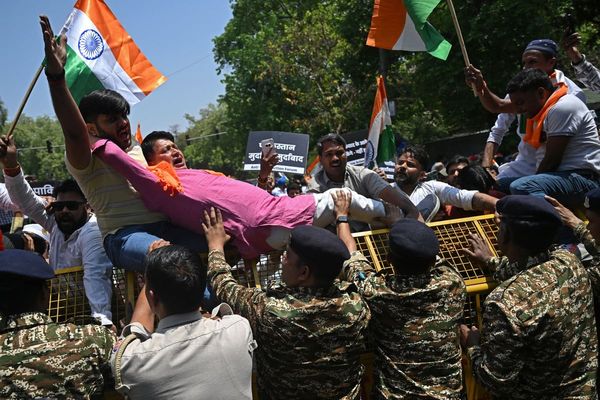
Up to 200,000 trees will be needed across inner Melbourne to prevent a widespread loss of canopy – and associated impacts to quality of life – from the planned construction of 800,000 new homes, research suggests.
A new report by the housing advocacy group Yimby Melbourne, released on Wednesday, estimates 24.3 hectares (60 acres) of residential tree canopy cover – the equivalent of six cricket ovals – could be lost each year as a result of densification across the 19 local government areas (LGAs) that make up inner Melbourne.
Using publicly available tree canopy, planning and other spatial data, the report estimates the amount of trees that may be removed from private properties each year in order for the LGAs to meet the state government’s draft housing targets.
It found Whitehorse, which takes in eastern suburbs such as Blackburn, Box Hill, Burwood, Mont Albert and Vermont, could lose 2.27 hectares of tree canopy each year, as it attempts to construct 28,210 new homes over the next decade.
It was followed by Boroondara, where 2 hectares of tree canopy could be lost annually as 23,930 more homes are added to suburbs such as Balwyn, Camberwell, Canterbury, Hawthorn and Kew.
“We don’t mince words about it. Thousands of trees are going to need to be planted to make up for the loss of private tree canopy as these blocks get redeveloped,” the report’s lead researcher, Paul Spasojevic, said.
The report assumes most areas subject to either a neighbourhood residential or general residential zone, which have minimum mandated garden areas of 25% to 35%, are replaced with higher density housing, requiring the removal of existing private tree canopy.
It said to maintain the current canopy, while densifying all 19 LGAs, 55 new trees would need to be planted for every 100 new homes, at a cost of $1,680 a dwelling.
But Yimby has urged the government to go further and increase the total mature tree canopy by 10%. The latter proposal would cost $73.6m a year, though this figure also includes 30 years of maintenance.
Yimby Melbourne’s lead organiser, Jonathan O’Brien, said the report was “ambivalent” about how it would be funded.
But the group was calling for the trees to be planted in public spaces.
“Under our model, every single new tree planted is an improvement on the status quo of Melbourne’s public space,” O’Brien said.
Prof Joe Hurley from RMIT’s Centre for Urban Research said benefits from strong tree canopies include their ability to counter the urban heat island effect, in which surfaces such as asphalt and concrete trap heat.
“They also play an important role in stormwater runoff reduction, provide shade from UV, and then there are proven benefits to your mental health and well being from being amongst nature in cities,” Hurley said.
“The fact house prices are higher where there are more trees proves people know the value of trees, they’re willing to pay more for them.”
Hurley said while “absolutely supportive” of tree canopy targets, public space could not be solely relied on to provide Melbourne’s tree canopy.
“In Melbourne, about half of canopy cover is on private land. So if we say, ‘Well, we should develop that land to get housing, but we won’t require any trees’, that would put enormous pressure on the public realm in existing neighbourhoods where there’s not that space.”
The report’s release comes after the government floated the possibility of tree canopy targets during consultation on Plan Victoria, a new strategy to guide housing growth.
A government spokesperson confirmed to Guardian Australia that communities had called for “more trees and green space”.
The Yimby report found the eastern LGAs had the most tree canopy in the state, with Maroondah the leafiest thanks to the 586-hectare Warrandyte state park, which is located within its boundaries.
Meanwhile, Brimbank – in the western suburbs – has the lowest canopy in inner Melbourne. This is followed by Hobson’s Bay, also in the west, and the Melbourne CBD.
The government in 2021 announced plans to plant 500,000 trees across the west in an effort to remedy this trend. About 75% have so far been planted.







